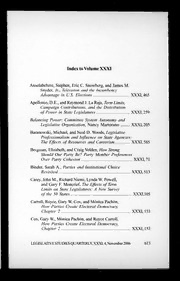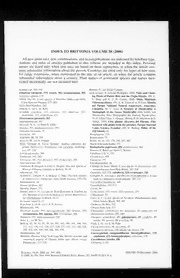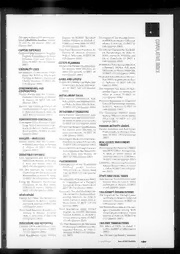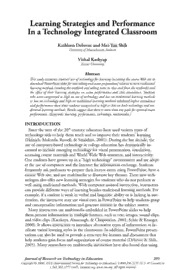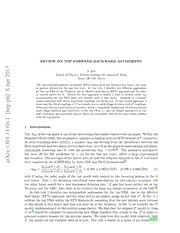
Preview Review on top forward-backward asymmetry
REVIEW ON TOP FORWARD-BACKWARD ASYMMETRY 3 1 P. KO 0 School of Physics, Korean Institute for Advanced Study 2 Seoul 130-722, Korea n a J The top forward-backward asymmetry (FBA) observed at the Tevatron has been a hot issue in particle physics for the last few years. In this talk, I describe two different approaches 8 for the top FBA at the Tevatron, one in effective field theory (EFT) approach and the other ] in explicit model for Z(cid:48). Within the first approach, I identify a class of models which can h accommodate the top FBA when new physics scale is very heavy. Axigluon or t-channel p scalar exchanges with flavor dependent couplings can do the job. In the second approach, I - showthatthechiralcouplingsofZ(cid:48)necessarilyinvitesmultiHiggsdoubletswithZ(cid:48)couplings. p e Otherwisethetopquarkbecomesmassless,whichiscompletelyunphysical. Newlyintroduced h multi Higgs doublets also contribute to the top FBA, σ and the charge asymmetry at the tt [ LHC,andthereareparameterregionswhicharecompatiblewithalltheobservationsrelated with the top quarks. 1 v 0 1 1 Introduction 4 1 TheA ofthetopquarkisoneoftheinterestingobservablesrelatedwithtopquark. Withinthe FB . 1 StandardModel(SM),thisasymmetryvanishesatleadingorderinQCDbecauseofC symmetry. 0 At next-to-leading order [O(α3)], a nonzero A can develop from the interference between the 3 s FB 1 Bornamplitudeandtwo-gluonintermediatestate,aswellasthegluonbremsstrahlungandgluon- : (anti)quark scattering into tt¯, with the prediction A ∼ 0.0781. The measured asymmetry v FB i has been off the SM prediction by ∼ 2σ for the last few years, albeit a large experimental X uncertainties. The averages of the lepton plus jet and the dilepton channels in the tt¯rest frame r a were reported at the ICHEP2012 by both CDF and D0 Collaborations2: N (cosθ ≥ 0)−N (cosθ ≥ 0) A ≡ t t¯ = (0.201±0.067)(CDF) (0.196±0.060)(D0) (1) FB N (cosθ ≥ 0)+N (cosθ ≥ 0) t t¯ with θ being the polar angle of the top quark with respect to the incoming proton in the tt¯ rest frame. This ∼ 2σ deviation stimulated some speculations on new physics scenarios. On the other hand, search for a new resonance decaying into ‘ tt¯pair has been carried out at the Tevatron and the LHC. Also there is no evidence for large top charge asymmetry at the LHC2. In this talk I describe two independent approaches for the top FBA, one in the effective field theory (EFT) approach, and the other within an explicit gauge model with Z(cid:48). In Sec. 2, I address the top FBA within the EFT framework, assuming that the new physics scale relevant to this puzzle is very heavy and does not show up at the Tevatron. In Sec. 3, we consider the Z(cid:48) model, implementingittotherealisticgaugetheory. WefindthattheoriginalZ(cid:48) modelbyJung et al.3 should be extended by introducing new Higgs doublets that couple to the Z(cid:48) in order to generate nonzero masses for the up-type quarks. We show how this model with relatively light Z(cid:48) can satisfy all the available data as of now. This talk is based on a series of my works4,5,6,7. 0.6 0.6 0.5 0.5 0.4 0.4 0.3 C1U 0.3 B 0.2 C1L B 0.2 C2U C2L F F A 0.1 A 0.1 0 0 -0.1 SM+INTFR. -0.1 SM+INTFR. -0.2 TOTAL -0.2 TOTAL CDF data CDF data -0.3 -0.3 300 400 500 600 700 800 300 400 500 600 700 800 Mtt [GeV] Mtt [GeV] Figure 1: The mtt¯distributions of the top FBA for (a) C2 =0 and (b) C1 =0. Blue dotted curves include the square of new physics amplitudes in addition to the interference term. 2 Effective Field Theory (EFT) Approach: the top FB asymmetry, longitudinal top polarization, and other observables 2.1 Lagrangian AttheTevatron,thett¯productionisdominatedbyqq¯→ tt¯,anditwouldbesufficienttoconsider dimension-6 four-quark operators (the so-called contact interaction terms) to describe the new physics effects on the tt¯production at the Tevatron assuming that new physics scale is high enough4: L = gs2 (cid:88)(cid:2)CAB(q¯ γ q )(t¯ γµt )+CAB(q¯ Taγ q )(t¯ Taγµt )(cid:3) (2) 6 Λ2 1q A µ A B B 8q A µ A B B A,B where Ta = λa/2, {A,B} = {L,R}, and L,R ≡ (1∓γ )/2 with q = (u,d)T,(c,s)T. Using this 5 effective lagrangian, we calculate the cross section up to O(1/Λ2), keeping only the interference term between the SM and new physics contributions. We make one comment: the chromomagnetic operators of dim-5 would be generated at one loop level, whereas the qq¯ → tt¯ operators can be induced at tree level. Therefore the chromomagnetic operators will be suppressed further by g /(4π)2×(loop function), compared s with the dim-6 operators we consider in this talk. Therefore we will ignore chromomagnetic operators in this talk. 2.2 Origin of FB Asymmetry It is straightforward to calculate the amplitude for q(p ) + q¯(p ) → t(p ) + t¯(p ) using the 1 2 3 4 above effective lagrangian and the SM. The squared amplitude summed (averaged) over the final (initial) spins and colors is given by 4g4 (cid:26) (cid:20) sˆ (cid:21) |M|2 (cid:39) s 2m2sˆ 1+ (C +C ) s2 (3) 9sˆ2 t 2Λ2 1 2 θˆ sˆ2 (cid:20)(cid:18) sˆ (cid:19) (cid:18) sˆ (cid:19) (cid:21)(cid:27) + 1+ (C +C ) (1+c2)+βˆ (C −C ) c 2 2Λ2 1 2 θˆ t Λ2 1 2 θˆ where sˆ = (p +p )2, βˆ2 = 1−4m2/sˆ, and s ≡ sinθˆ and c ≡ cosθˆ with θˆ being the polar 1 2 t t θˆ θˆ angle between the incoming quark and the outgoing top quark in the tt¯rest frame. And the couplings are defined as: C ≡ CLL +CRR and C ≡ CLR +CRL. Since we have kept only 1 8q 8q 2 8q 8q up to the interference terms, there are no contributions from the color-singlet operators with coupling CAB. The term linear in cosθˆcould generate the forward-backward asymmetry which 1q is proportional to ∆C ≡ (C − C ). Note that both light quark and top quark should have 1 2 chiral couplings to the new physics in order to generate A at the tree level (namely ∆C (cid:54)= 0). FB This parity violation, if large, could be observed in the nonzero (anti)top spin polarization5. We found that the Tevatron integrated top FBA can be explained for 0.15 (cid:46) C (cid:46) 0.97 or 1 −0.67 (cid:46) C (cid:46) −0.15 at 1σ level for Λ = 1 TeV. Note that the negative sign of C is preferred 2 2 at the 1 σ level. In Fig. 1 (a) and (b), I show the mass dependent top FBA using the ranges of C or C determined from the integrated FBA. Note that the results based on the EFT is 1 2 somewhat lower than the data at the high m region4. If this disagreement does not disappear, tt¯ it would imply that the EFT approach is not a good description for the top FBA. 2.3 Longitudinal polarization of top quark probes chiral structures of new physics The top AFB is not sensitive to the detailed chiral structures of new physics, since the AFB depends on two couplings, C = CLL +CRR and C = CLR +CRL, and not individual CAB’s. 1 8q 8q 2 8q 8q 8q In Ref.5, the top longitudinal polarization was proposed as a probe of chiral structures of new physicsthatwouldberelevanttotheTevatrontopFBA.Notethatthelongitudinalpolarizations oftandt¯vanishinQCDduetoitsparityconservation. AnynewphysicsforthetopFBAinvolve chiral couplings of a new particle to the SM quarks and the parity will be no longer conserved when interfering with QCD. Neglecting the transverse polarizations, one can derive (cid:40) (cid:41) g4 |M|2 = s D +D (P +P¯ )+D (P −P¯ )+D P P¯ . (4) sˆ2 0 1 L L 2 L L 3 L L where P and P¯ are the longitudinal polarizations of t and t¯. The unpolarized coefficient D L L 0 leads to the total cross section σ and the forward-backward asymmetry A shown in Eq. (3). tt¯ FB On the other hand, the coefficient D gives the spin-spin correlations C and C considered and 3 FB suggested in Ref.5. Note that the other two coefficients D and D are P violating. Furthermore, the coefficient 1 2 D1 is odd under both the CP and CPT(cid:101) transformationsa. In our effective lagrangian approach, new heavy particles are integrated out, and there is no new strong CP-even phase, and so D is 1 zero. However, it could be nonzero when the heavy particle is explicitly included, and we keep the finite decay width of the heavy particle together with possible CP-violating phases in its couplings to light and top quarks. This issue will be discussed in full in the future publication8. The other P-violating coefficient D could be observable at the Tevatron, revealing genuine 2 features of new physics responsible for A . Explicitly, we have obtained FB sˆ (cid:104) (cid:105) D (cid:39) (C(cid:48) +C(cid:48))βˆ(1+c2)+(C(cid:48) −C(cid:48))(5−3βˆ2)c (5) 2 9Λ2 1 2 t θˆ 1 2 t θˆ with C(cid:48) ≡ CRR −CLL, C(cid:48) ≡ CLR −CRL. Therefore D will provide additional information 1 8q 8q 2 8q 8q 2 on the chiral structure of new physics in qq¯ → tt¯. When we integrate over the polar angle θˆ, only the first term involving (C(cid:48) + C(cid:48)) = CRR − CLL + CLR − CRL survives. On the other 1 2 8q 8q 8q 8q hand, if we separate the forward and the backward top samples and take the difference, the orthogonal combination in the second term survives: (C(cid:48) −C(cid:48)) = CRR −CLL −CLR +CRL. 1 2 8q 8q 8q 8q aTheT(cid:101) transformationreversesthesignsofthespinsandthethree-momentaoftheasymptoticstates,without interchanging initial and final states, and the matrix element gets complex conjugated. 46 D=0.1 DFB=-0.3 D=0.3 DFB=-0.1 0. 007.15 ~ ~V8R, V8R, Sα13β 2 D=-0.1 (+,–) DFB=0.1 0.05 S1R 2Λ) 0.025 V/ SM ′C (1 Te2 - 02 D=-0.3(–,–) (+,+) DFB=0.3 DFB -0.02 05 (–,+) ~ -4 -0.05 ~ S1L -0.075 V8L, V8L -6 -6 -4 -2 0 2 4 6 -0.1 C 1′ (1 TeV/Λ)2 -0.1-0.075-0.05-0.025 D0 0.025 0.05 0.075 0.1 Figure2: TheP-violatingspincorrelationsDandD inthe(C(cid:48),C(cid:48))plane. Thesignsof(D,D )aredenoted. FB 1 2 FB For definiteness, we consider the two new observables: σ(t t¯ )−σ(t t¯ ) R L L R D ≡ , σ(t t¯ )+σ(t t¯ )+σ(t t¯ )+σ(t t¯ ) R R L L L R R L D ≡ D(cosθˆ≥ 0)−D(cosθˆ≤ 0) (6) FB which involve the sum and difference of the coefficients C(cid:48) and C(cid:48), respectively. In Fig. 2, we 1 2 show the P-violating spin correlations D and D in in the (C(cid:48),C(cid:48)) plane within the parameter FB 1 2 region consistent with the top FBA at the Tevatron. We observe that |D| and |D |, which are FB zero in the SM, could be as large as 0.1 in the region |C(cid:48) (1TeV/Λ)2| (cid:46) 1, which have to be 1,2 actively searched for. 3 Beyond the EFT : the case of extra Z(cid:48) model with flavored multi Higgs Doublets 3.1 Original Z(cid:48) model for the top FBA Now let us consider an explicit model, a Z(cid:48) model first proposed by Jung, Murayama, Pierce and Wells 3. In this model, it is assumed that there is a flavor changing couplings of Z(cid:48) to the right-handed u and t quarks: L = −g Z(cid:48) (cid:2)t γµu +H.c.(cid:3). (7) X µ R R Thet-channelexchangeofZ(cid:48) leadstotheRutherfordpeakintheforwarddirectionandgenerates the desired amount of the top FBA if Z(cid:48) is around 150−250 GeV and g is not too small. Here X Z(cid:48) is assumed to couple only to the right-handed (RH) quarks in order to evade the strong bounds from the FCNS processes such as K0−K0, B0 −B mixings and B → X γ. And d(s) d(s)0 s such a light Z(cid:48) should be leptophobic in order to avoid the strong bounds from the Drell-Yan processes. Therefore the original Z(cid:48) model is chiral, leptophobic and flavor non universal. It would be nontrivial to construct a realistic gauge theory which satisfies these conditions. Also the original Z(cid:48) model was excluded by the same sign top pair productions, because Z(cid:48) exchange can contribute to uu → tt. 3.2 U(1)(cid:48) models with flavored multi Higgs doublets by Ko, Omura and Yu In Ref.s 6,7, realistic models for such peculiar Z(cid:48) have been constructed, and were shown to be less constrained by the same sign top pair production. In Ref.s6,7, Z(cid:48) is assumed to be a gauge boson of a new U(1)(cid:48) local gauge symmetry, under which the RH quarks are charged non universally, whereas other quarks are charged universally or completely neutral. Then one cannot write renormalizable Yukawa couplings to the RH up-type quarks, since QLH(cid:101)uR is not gauge invariant, where H is the SM Higgs doublet which is U(1)(cid:48) singlet and generates masses for the down-type quarks and charged leptons. We have to introduce new Higgs doublets H i which are charged under the new U(1)(cid:48). We can also introduce a singlet scalar which carries U(1)(cid:48) chargeandbreaksU(1)(cid:48) spontaneously. HoweveritisnotmandatorytointroduceΦ, since the newly introduced U(1)(cid:48)-charged Higgs doublets H also break U(1)(cid:48) and generate Z(cid:48) mass i too. The offshot of the chiral Z(cid:48) model is that one has to extend the Higgs sector, whether Z(cid:48) couplings are flavor universal or not, as long as the Z(cid:48) couplings are chiral. b The same arguments apply to other models with new spin-1 objects that have chiral couplings to the SM fermions, including the axigluon, extra W(cid:48), SU(2) W , Z and SU(3) flavor gauge bosons. I I R Introducing U(1)(cid:48) flavored Higgs doublets is very important because they generates nonzero top mass. They also play an important role in top FBA phenomenology. For example the Yukawa couplings of the neutral scalar bosons h,H,a have flavor changing couplings to the up-type quarks because of the flavor non universal nature of Z(cid:48) interaction 6,7: 2m (gu) Yh = t R ut sin(α−β)cosα , (8) tu vsin(2β) Φ 2m (gu) YH = − t R ut cos(α−β)cosα , (9) tu vsin(2β) Φ 2m (gu) Ya = t R ut . (10) tu vsin(2β) These Yukawa couplings are not present in the Type-II 2HDM, for example. Our models proposed in Ref.s6,7 are good examples of non minimal flavor violating multi Higgs doublet models. The top FBA and the same sign top pair productions are generated not only by the t- channel Z(cid:48) exchange, but also by the t-channel exchange of neutral Higgs scalars, and the strong constraint on the original Z(cid:48) model from the same sign top pair production can be relaxed by a significant amount. The results with a few low lying (pseudo)scalar bosons as well as Z(cid:48) are shown in Fig. 3. Note that the strong bound from the same sign top pair production can be evaded because of the t−channel exchanges of h and a. And the m distribution becomes closer tt¯ to the SM case in the presence of h and a contributions. (See Ref.7 for more detailed discussions on top charge asymmetry at the LHC and Ref.9 for the B physics constraints on these models.) 4 Conclusions In this talk, I discussed two independent approaches for the top FB asymmetry observed at the Tevatron in the framework of new physics models beyond the SM. Whatever the new physics solutions may be, there are some common features: we need new interactions with chiral cou- plings to the top and the light quarks, and nontrivial flavor structures in the quark sector, which is not easy to achieve in any realistic models because of the strong constraints from K and B meson systems. If the new physics involves chiral couplings of new spin-1 vector boson, one has to extend the Higgs sector too, by including new Higgs doublets that couple to the new spin-1 vector boson. Otherwise, the model cannot give the up-type quark masses. All the top-related observables we are interested in, such as top FB asymmetry at the Tevatron, the same sign top pair production cross section and top charge asymmetry at the LHC, are crucially depen- dent on the extended Higgs sector as well as the spin-1 objects with chiral couplings, and it is meaningless to discuss the phenomenology without the new Higgs doublets. bThe model has gauge anomaly, and one has to add some fermions. This issue is described in Ref.6 in detail. 0.06 0.1 Differential cross section [pb/GeV] 00000.....0000012345 SZZ′′M+h+a yAC - 00000.....00000 022468 (b) ξ=1AaallCylloo iwwn eeSddM bbyy CATMLSAS 0 -0.04 300 400 500 600 700 800 900 -0.1 0 0.1 0.2 mtt AFtB 20 20 (a) ξ=1 (a) ξ=0 allowed by CMS allowed by CMS 15 15 tt[pb]σ 10 tt[pb]σ 10 5 5 allowed by ATLAS allowed by ATLAS 0 0 -0.1 0 0.1 0.2 -0.1 0 0.1 0.2 AFtB AFtB Figure 3: The scattered plots for (a) the m distributions for the SM, SM+Z(cid:48) and SM + Z(cid:48),h+a, (b) At tbart FB at the Tevatron and σtt at the LHC for ξ =1, and (c) and (d) At at the Tevatron and the charge asymmetry FB Ay at the LHC for ξ=1 and ξ=0, respectively. C Acknowledgments Theauthorthankstheorganizersfortheinvitationandtheniceorganization. Heisalsograteful to Dong Won Jung, Jae Sik Lee, S.-h. Nam, Yuji Omura and Chaehyun Yu for fruitful collab- orations on the topics discussed in this talk. This work is supported by NRF Research Grant 2012R1A2A1A01006053, and by SRC program of NRF Grant No. 20120001176 through Korea Neutrino Research Center at Seoul National University. References 1. J. H. Kuhn and G. Rodrigo, arXiv:1109.6830 [hep-ph] 2. T. Mu¨ller, plenary talk at the ICHEP2012, Melbourne, Austrailia 3. S. Jung, H. Murayama, A. Pierce and J. D. Wells, Phys. Rev. D 81, 015004 (2010) 4. D.-W.Jung, P.Ko, J.S.LeeandS.-h.Nam, Phys. Lett. B691, 238(2010); D.-W.Jung, P. Ko and J. S. Lee, Phys. Lett. B 708, 157 (2012) 5. D. -W. Jung, P. Ko and J. S. Lee, Phys. Lett. B 701, 248 (2011) ; Phys. Rev. D 84, 055027 (2011) 6. P. Ko, Y. Omura and C. Yu, Phys. Rev. D 85, 115010 (2012) ; JHEP 1201, 147 (2012) 7. P. Ko, Y. Omura and C. Yu, arXiv:1205.0407 [hep-ph], to appear in EPJC 8. D. -W. Jung, P. Ko and J. S. Lee, work in progress 9. P. Ko, Y. Omura and C. Yu, KIAS Preprint P12084, arXiv:1212.4607 [hep-ph]
The list of books you might like

Better Than the Movies

Rich Dad Poor Dad

The 48 Laws of Power

Corrupt (Devil's Night #1)

Rock Hudson: His Story

capitolul 2 analiza situatiei actuale
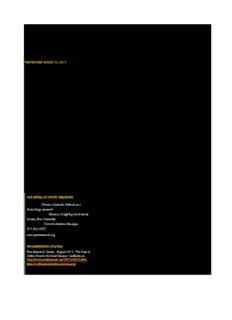
BY Lee Rainie and Janna Anderson

Secret of the Ring Muscles
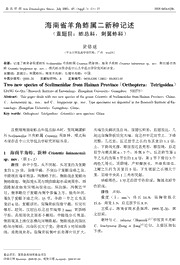
Two new species of Scelimenidae from Hainan Province (Orthoptera:Tetrigoidea)
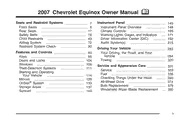
2007 Chevrolet Equinox Owner Manual
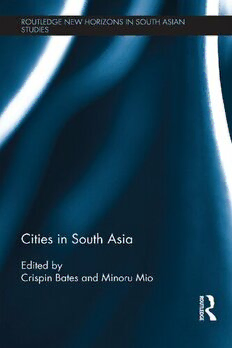
Cities in South Asia
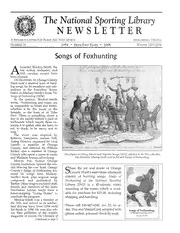
NSLM Newsletter - Winter 2006

ES 4755: GENERAL REQUIREMENTS FOR SAFETY OF LAMP CONTROL GEAR
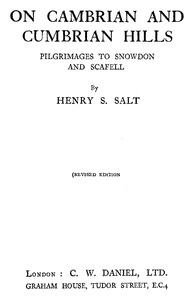
On Cambrian and Cumbrian Hills: Pilgrimages to Snowdon and Scafell by Henry S. Salt

c 2009 by Kyoungsoo Park
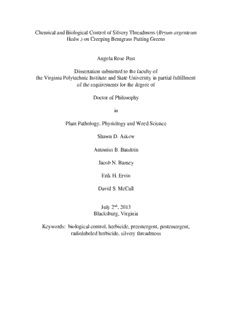
(Bryum argenteum Hedw.) on Creeping Bentgrass Putting Greens Angela Rose P
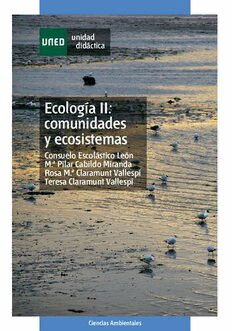
Ecología

Bertolt Brecht : Homme pour homme

Together
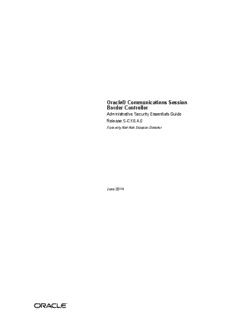
Oracle Communications Session Border Controller Admin
